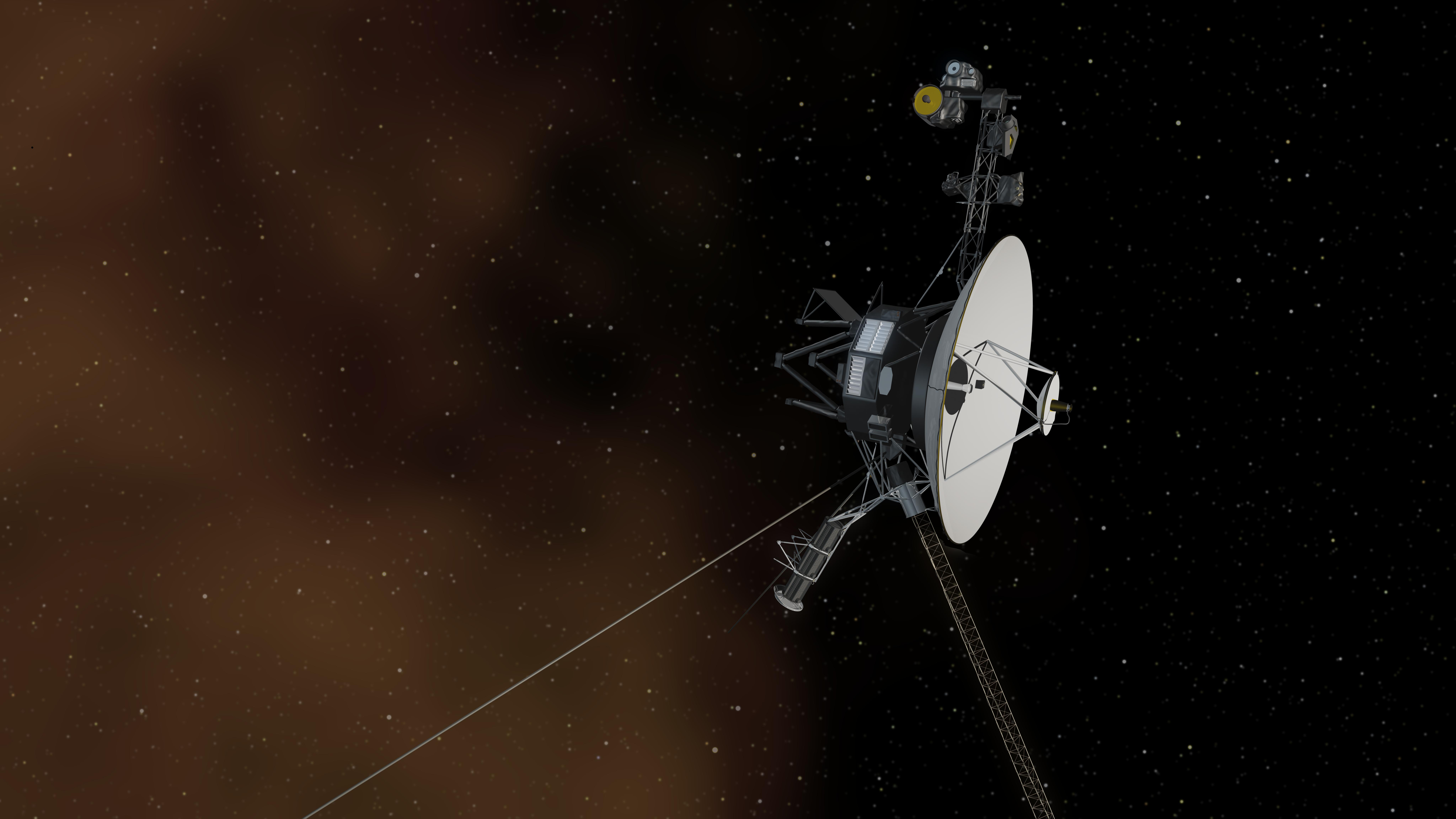Edward Stone is retiring after 50 years as Project Scientist for the Voyager mission. The twin spacecraft revolutionized our understanding of our Solar System, and Stone was along for the ride every step of the way. Both spacecraft are still going, travelling deeper into interplanetary space, and still sending data home.
But after a long and rewarding career full of achievements and recognition, Stone is moving on.
When the Voyager spacecraft launched in 1977, our understanding of the Solar System was in its infancy. But Voyager 1 and 2 changed that. The mission set off a cascade of discoveries that still resonates today.
“When I look back, I realize how little we actually knew about the solar system before Voyager.”
Ed Stone, Voyager Mission Project Scientist.
The mission illuminated our understanding of the outer Solar System. Among other things, the spacecraft spotted volcanic activity on Jupiter’s moon Io, found erupting plumes on Saturn’s moon Titan, and discovered 16 new moons.

Voyager gave us close-up colour pictures of the outer planets that brought them to life. In fact, the pair of them took over 33,000 images of just Jupiter and its moons.
But the mission’s most famous image is of distant Earth. It’s called “The Pale Blue Dot,” and it’s the last image Voyager 1 took before its cameras were turned off forever. It was Carl Sagan’s idea to point the spacecraft back toward Earth and take the picture.

Ed Stone was the Voyager Project Scientist through all of this, and now he’s announced his retirement. Over the years, Stone was an eloquent spokesperson for the Voyager mission.
“In exploring the four outer planets, Voyager has already had an epic journey of discovery,” Stone said in 1991. “Even so, their journey is less than half over, with more discoveries awaiting the first contact with interstellar space,” Stone said. “The Voyagers revealed how limited our imaginations really were about our solar system, and I expect that as they continue toward interstellar space, they will again surprise us with unimagined discoveries of this never-before-visited place which awaits us beyond our planetary neighbourhood.”
“When I look back, I realize how little we actually knew about the solar system before Voyager,” Stone said in 2010. “We discovered things we didn’t know were there to be discovered, time after time.”
Stone was a busy man and was involved in many other missions besides Voyager. During his term as director of JPL, he was responsible for a variety of missions and instruments, including Magellan, Galileo, Ulysses, TOPEX/Poseidon, Mars Observer, Hubble Wide Field/Planetary Camera, Shuttle Imaging Radar, NASA Scatterometer, Mars Global Surveyor, Mars Pathfinder/Sojourner, Cassini/Huygens, Deep Space 1, QuickSCAT, ACRIMSAT, Stardust, Mars Climate Orbiter, Mars Polar Lander, Shuttle Radar Topography Mission, Mars Odyssey, Genesis and Jason l.
Stone received accolades for his contribution to science and humanity. In 1986, he won the Outstanding Leadership Medal along with other members of the Voyager team. In 2014 he received a lifetime achievement award from the American Astronautical Society. He even went on the Stephen Colbert show in 2013 to talk about Voyager, and Colbert surprised him with the NASA Distinguished Public Service Medal.

“I was on the Colbert Report to talk about what I think of as humankind’s greatest—and certainly most extensive—journey of exploration, and I certainly didn’t expect the host to hand me an award,” said Stone. “That surprise on my face was real.”
Stone may be retiring, but Voyager isn’t. Mission operators are handling the spacecraft very carefully, though, and preserving power by shutting individual systems down. But both Voyager 1 and 2 are still transmitting data from their journey into interstellar space.
“The wonderful thing about the Voyager journey is not just that it’s 40 years long, but in fact, it’s still discovering new things because it’s going where nothing has been before,” Stone said in 2017.

It has been a remarkable journey, and I’m thankful to everyone around the world who has followed Voyager and joined us on this adventure.”
Ed Stone, Voyager Project Scientist.
Voyager 1 and 2 will outlive Stone, which is kind of sad and beautiful at the same time. In fact, the spacecraft might outlive humanity. They’ll run out of power and stop gathering and transmitting data, but they’ll keep going, carrying a gift in the event of an unlikely encounter with another civilization.
Hope rides shotgun on missions like Voyager. Alongside all the science objectives is the idea that it’s all worth it. That humanity has a future. And 1977 was a different world compared to today.
The West was locked into the Cold War with the USSR. Their arsenals of nuclear weapons grew larger and larger, and they devised more technologically ingenious ways to deliver them to each others’ cities. People were worried about nuclear accidents and toxic waste, and there were gloomy predictions about the environment and human over-population.
On the flip side, Star Wars was released in 1977, personal home computers were available for sale, smallpox was eradicated, and the first test flight of the Space Shuttle took place.
A lot has happened since the Voyager spacecraft were launched. No doubt Stone is reflective about how the world has changed since 1977. For Stone, it’s been a remarkable journey.
“It has been an honour and a joy to serve as the Voyager project scientist for 50 years,” Stone said. “The spacecraft have succeeded beyond expectation, and I have cherished the opportunity to work with so many talented and dedicated people on this mission. It has been a remarkable journey, and I’m thankful to everyone around the world who has followed Voyager and joined us on this adventure.”
From all of us who are hopeful about humanity, thanks Ed.


Thank you Ed, I have followed your work with great interest. May you enjoy a long and healthy retirement.